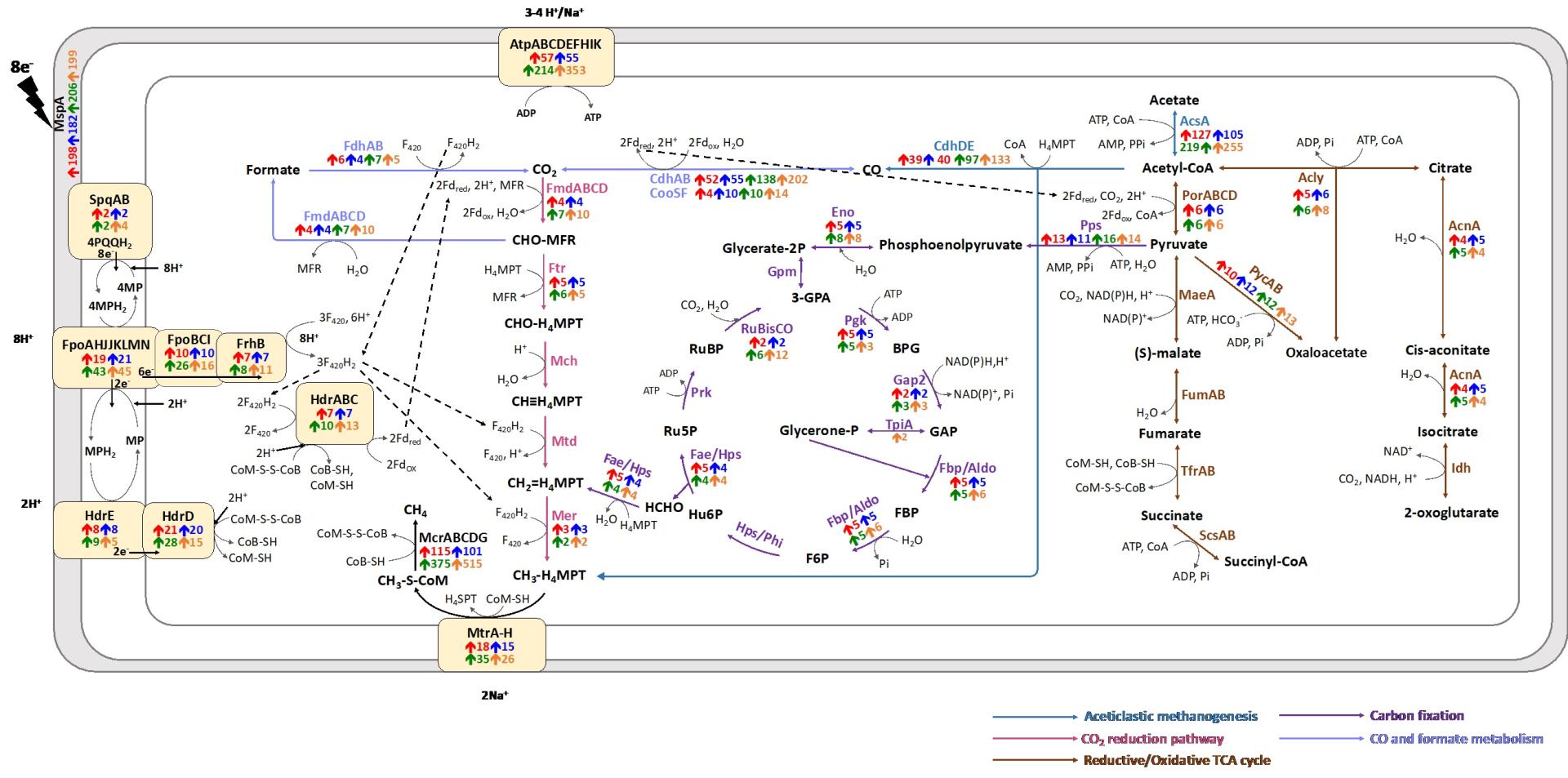Methanothrixis a significant methane producer in a variety of methanogenic environments including soils and sediments as well as anaerobic digesters. Its abundance in these anoxic environments has mostly been attributed to its high affinity for acetate and its ability to grow by acetoclastic methanogenesis. However,Methanothrixspecies can also generate methane by directly accepting electrons from exoelectrogenic bacteria through direct interspecies electron transfer (DIET).
Recently, Prof. Meng Li’s group from the Institute for Advanced Study of Shenzhen University published a research paper titled “Methane production byMethanothrix thermoacetophilavia direct interspecies electron transfer withGeobacter metallireducens”in mBio, revealing thephysiology of DIET between an exoelectrogen andMethanothrix. Co-cultures were firstly established betweenG. metallireducensandMethanothrix thermoacetophila. In addition, to more fully understand the impact that conductive materials can have onMethanothrixphysiology, two different conductive materials, granular activated carbon (GAC) and magnetite nanoparticles were added toMx. thermoacetophilacultures. Transcriptomic studies were also done to identify potential pathways for electron transfer between the electron- donating (G. metallireducens) and electron-accepting (Mx. thermoacetophila) partners. These results provide valuable insights intoMethanothrixphysiology that can be used to better understand carbon flow in many methanogenic terrestrial ecosystems and to help optimize biomethane production from waste.
Professor Meng Li from IAS is the corresponding author, and associate researcher Dr. Jinjie Zhou from IAS is the first author.This work was supported by the grants from the National Natural Science Foundation of China, the Innovation Team Project of Universities in Guangdong Province, the Science and Technology Innovation Committee of Shenzhen, and China Postdoctoral Science Foundation.Paper link:https://journals.asm.org/doi/10.1128/mbio.00360-23

Fig. 1. Proposed pathways used byMethanothrix thermoacetophiladuring growth by acetoclastic and DIET-based methanogenesis in the presence or absence of magnetite.


